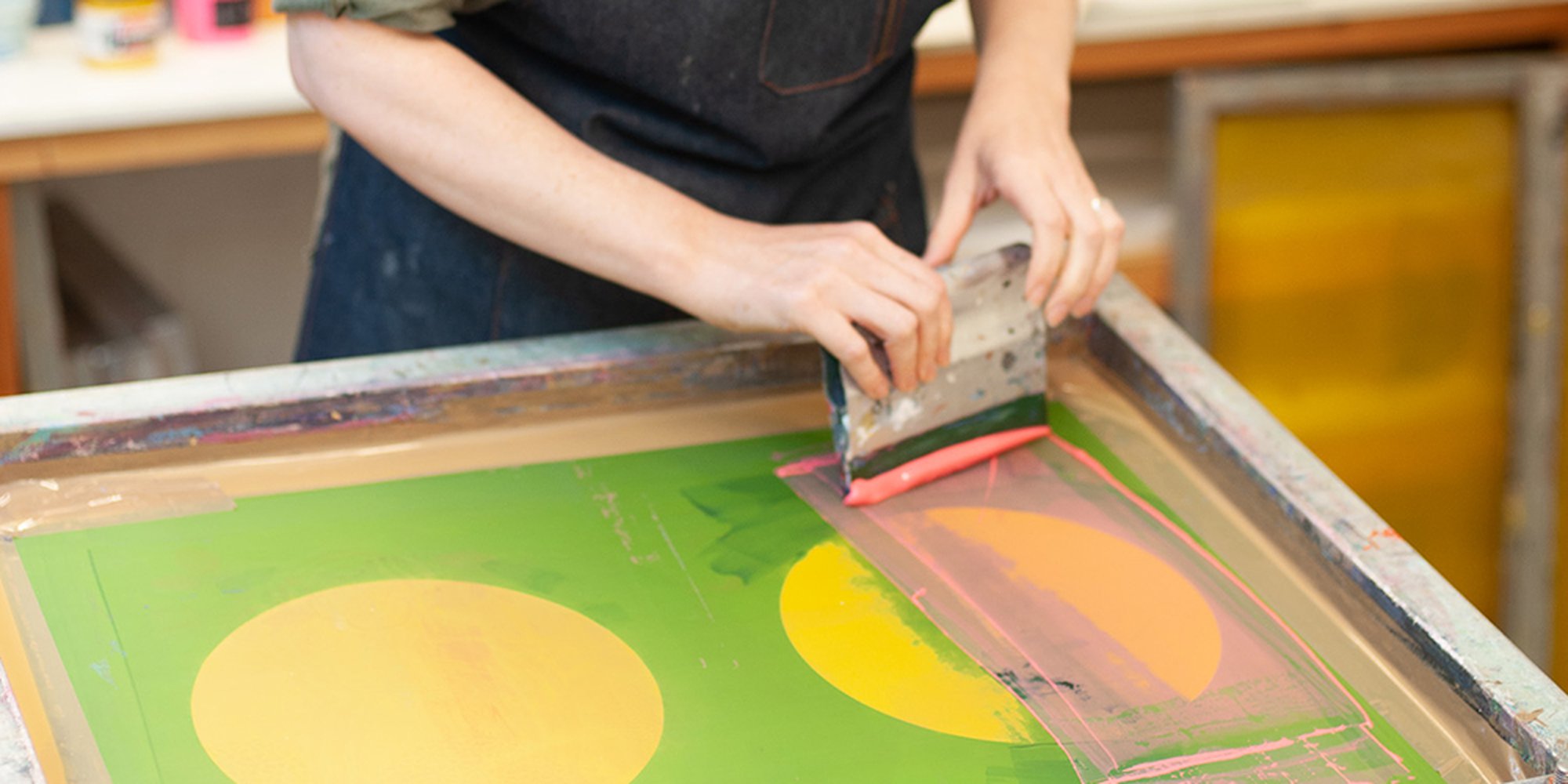ChatGPT said: Top benefits to choose 10:9 Design Embroidery for professional customization
The Important Overview to Comprehending Screen Printing and Its Versatile Makes use of
Screen printing has a rich background that goes back to ancient times, progressing right into a sophisticated technique made use of across different sectors today. This overview discovers the ins and outs of the screen printing process, detailing its applications in home, fashion, and advertising design - 10:9 Design Embroidery. Understanding these fundamentals can open up creative capacity for both creative and industrial projects. The following sections will certainly disclose vital pointers and techniques to enhance one's screen printing ventures
The Background of Screen Printing
Although screen printing has origins that map back centuries, its development reflects the imaginative and technological developments of various societies. Coming from in old China, the strategy was initially utilized for embellishing fabrics and later infect Japan, where it came to be integral to Ukiyo-e woodblock printing. The method moved to Europe in the 18th century, where it got appeal among artisans and business printers. The innovation of image emulsion in the 20th century transformed screen printing, permitting even more elaborate styles and greater effectiveness. Musicians like Andy Warhol better moved its appeal, utilizing the medium to develop renowned works that blended commercialism and art. By the late 20th century, screen printing had established itself as a versatile strategy, employed in vogue, marketing, and art. Today, it remains to evolve, incorporating digital technology and broadening its applications across different markets.
The Screen Printing Process Explained
Screen printing changes creative visions into concrete layouts via a collection of specific steps. Initially, a photo is developed and afterwards moved onto a screen, typically constructed from great mesh textile stretched over a frame. A light-sensitive emulsion is related to the screen, which is subjected to light, setting in areas not covered by the photo. After rinsing the unhardened emulsion, a pattern is created.
Next off, the screen is put over the substratum, whether it be material, paper, or one more product. Ink is then pushed with the open areas of the pattern making use of a squeegee, depositing the design onto the substrate below. This process can be repeated for several colors, requiring separate displays for every hue. Lastly, the printed thing is cured utilizing warm to ensure the ink adheres correctly, resulting in a long lasting, lively layout prepared for use.
Kinds of Screen Printing Techniques

Additionally, specialized techniques, such as discharge screen printing, remove color from the fabric to produce softer prints, while aluminum foil screen printing uses metal foil to achieve a glossy finish (10:9 Design Screen Printing Texas). Each technique uses distinctive attributes, catering to different imaginative needs and manufacturing ranges, eventually expanding the opportunities within the screen printing domain
Applications of Screen Printing in Various Industries

Furthermore, the signs and marketing sectors utilize screen printing for creating eye-catching screens and banners. This approach permits vibrant colors and elaborate layouts that record attention. In electronics, screen printing is employed for using conductive inks to motherboard, crucial for part links. In addition, the home style sector accepts screen printing to produce distinctive layouts on fabrics and wall art. Overall, screen printing acts as an essential device across varied fields, boosting items with personalized and aesthetically appealing graphics.
Tips for Effective Screen Printing Projects
While undertaking a screen printing job, careful attention to detail can substantially enhance the last end result. Initially, picking premium products is crucial; this includes the screen, inks, and substratums. Utilizing proper mesh counts can affect ink deposition and information resolution. Prep work is similarly essential; detailed cleaning of screens and correct direct exposure times guarantee crisp prints.
Next off, accurate enrollment is critical for multi-color prints. Using alignment tools can assist achieve accurate layering. Furthermore, screening prints on scrap products before manufacturing assists identify prospective problems without throwing away resources.

Often Asked Questions
What Materials Are Ideal for Screen Printing on Material?
Cotton and polyester blends are suitable for screen printing on material due to their sturdiness and ink absorption. Additionally, specialty materials like silk or canvas can produce special structures and coatings, improving the total style high quality.
Exactly how Do I Tidy and Maintain Screen Printing Equipment?
To preserve and clean up screen printing devices, one must routinely wash screens with ideal solvents, evaluate squeegees for wear, lubricate moving parts, and shop all items in a dry, dust-free atmosphere to prolong their life expectancy.
What Are the Environmental Influences of Screen Printing?
Screen printing can have substantial ecological impacts, consisting of chemical waste from solvents and inks, water use during cleaning procedures, and power consumption. Lasting practices and green products are important for minimizing these unfavorable impacts.
Can Screen Printing Be Done in the house Effectively?
Screen printing can be properly done at home with the ideal products and techniques. Enthusiasts can develop high quality prints, though success depends upon their ability level, equipment, and understanding of the procedure involved.
What Are the Prices Connected With Starting a Display Printing Company?

Beginning a screen printing service involves prices for devices, products, and work space. First expenditures generally range from a couple of hundred to numerous thousand bucks, relying on the scale, quality of equipment, and wanted production capacity.
Screen printing has an abundant background that dates back to ancient times, advancing into an innovative technique website used across numerous industries today. Another technique, rotating screen printing, utilizes round screens, promoting continuous printing on textile rolls, therefore enhancing performance for large productions. Additionally, specialty techniques, such as discharge screen printing, remove color from the textile to develop softer prints, while aluminum foil screen printing uses metal foil to attain a glossy surface. In the fashion market, screen printing is commonly used to produce vibrant designs on apparel, allowing brands to showcase their unique designs. Cotton and polyester blends are perfect for screen printing on fabric due to their resilience and ink absorption.